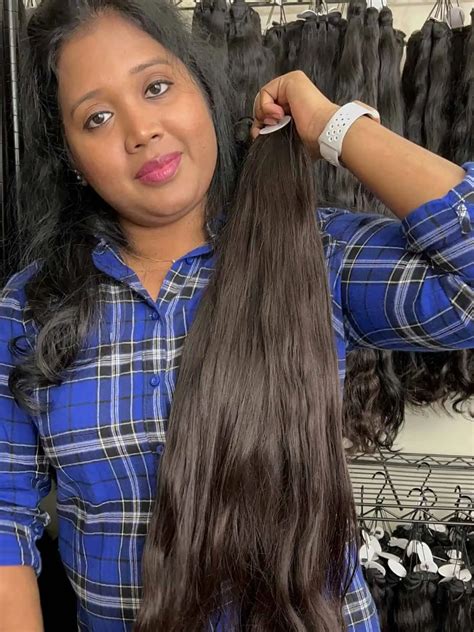What is Raw Indian Hair?
Raw Indian hair is a type of human hair that has not been chemically treated or processed in any way. It is collected from donors in India and is considered to be some of the finest quality hair available. Raw Indian hair is known for its natural shine, strength, and versatility.

The Benefits of Raw Indian Hair
- Natural shine: Raw Indian hair has a natural shine that is unmatched by other types of hair. This shine is due to the fact that the hair has not been treated with chemicals or dyes.
- Strength: Raw Indian hair is very strong and durable. It is less likely to break or tear than other types of hair.
- Versatility: Raw Indian hair can be styled in a variety of ways. It can be straightened, curled, or colored without damaging the hair.
- Long-lasting: Raw Indian hair can last for several years with proper care. It is a great investment for anyone who wants to have beautiful, healthy hair for a long time.
- Hypoallergenic: Raw Indian hair is hypoallergenic and does not irritate the skin. This makes it a good choice for people with sensitive skin.
The Cons of Raw Indian Hair
- Price: Raw Indian hair can be more expensive than other types of hair. This is due to the fact that it is a rare and premium product.
- Availability: Raw Indian hair can be difficult to find. It is not as widely available as other types of hair.
- Maintenance: Raw Indian hair requires regular maintenance to keep it looking its best. It should be washed and conditioned regularly, and it should be trimmed to remove any split ends.
How to Care for Raw Indian Hair
- Wash your hair regularly. Raw Indian hair should be washed regularly to remove dirt and oil buildup. Use a mild shampoo and conditioner, and be sure to rinse your hair thoroughly.
- Condition your hair. Conditioning your hair will help to keep it soft and shiny. Use a conditioner that is designed for dry or damaged hair.
- Trim your hair regularly. Trimming your hair will help to remove any split ends. This will prevent your hair from becoming frizzy or breaking.
- Avoid heat styling. Heat styling can damage your hair. If you must use heat styling tools, be sure to use a heat protectant spray.
- Protect your hair from the sun. The sun can damage your hair. Be sure to wear a hat or scarf when you are outdoors.
Where to Buy Raw Indian Hair
Raw Indian hair can be purchased from a variety of sources. You can find it online, in hair salons, and in some beauty supply stores. When you are buying raw Indian hair, be sure to do your research and choose a reputable vendor.
Conclusion
Raw Indian hair is a beautiful, versatile, and long-lasting type of hair. It is a great investment for anyone who wants to have beautiful, healthy hair for a long time. If you are considering purchasing raw Indian hair, be sure to do your research and choose a reputable vendor.
Table 1: Comparison of Raw Indian Hair to Other Types of Hair
| Feature | Raw Indian Hair | Other Types of Hair |
|---|---|---|
| Shine | Natural | Artificial |
| Strength | Strong | Weaker |
| Versatility | Versatile | Less versatile |
| Longevity | Long-lasting | Shorter-lasting |
| Hypoallergenic | Hypoallergenic | May not be hypoallergenic |
Table 2: Benefits of Raw Indian Hair
- Natural shine
- Strength
- Versatility
- Long-lasting
- Hypoallergenic
Table 3: Cons of Raw Indian Hair
- Price
- Availability
- Maintenance
Table 4: How to Care for Raw Indian Hair
- Wash your hair regularly.
- Condition your hair.
- Trim your hair regularly.
- Avoid heat styling.
- Protect your hair from the sun.
